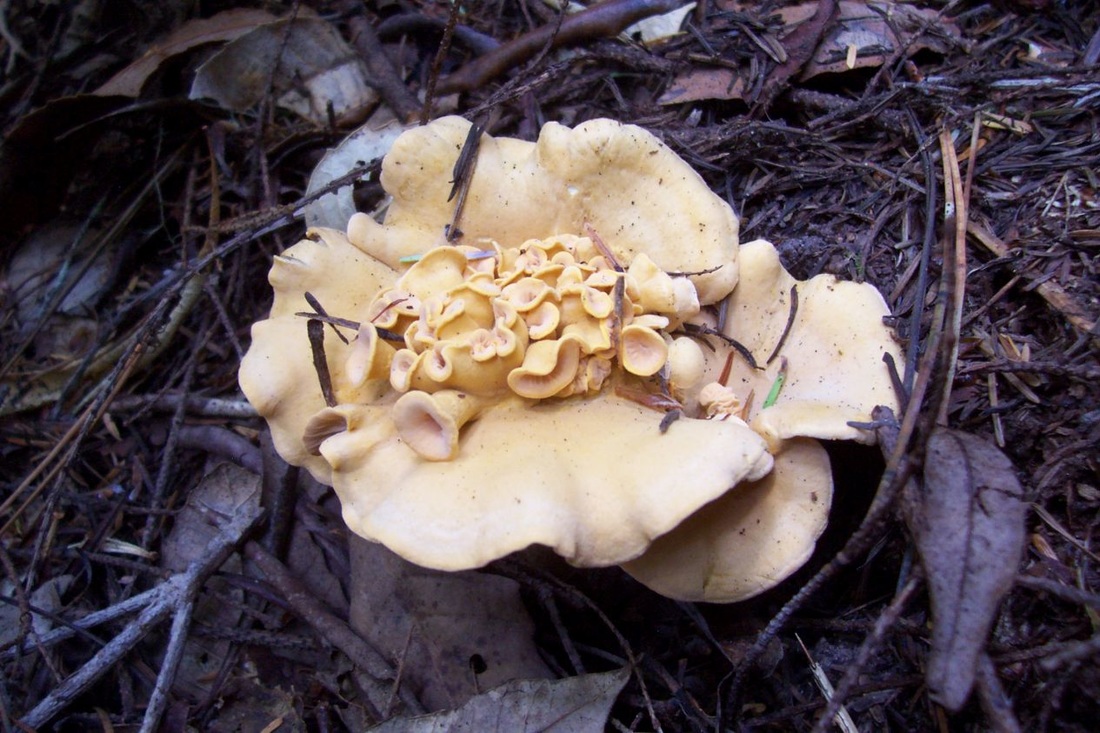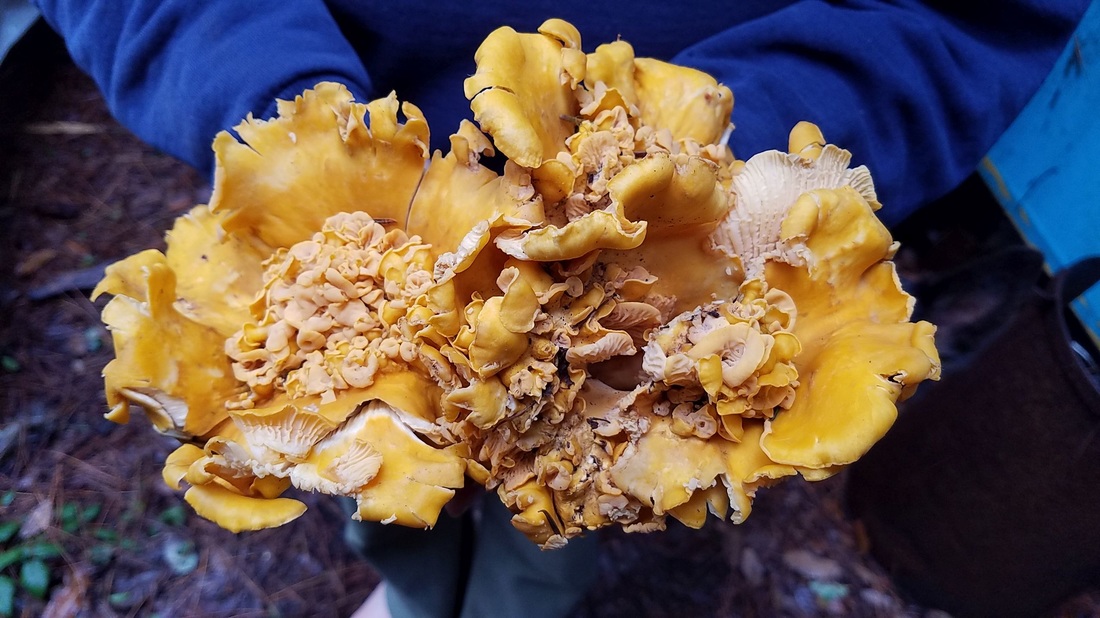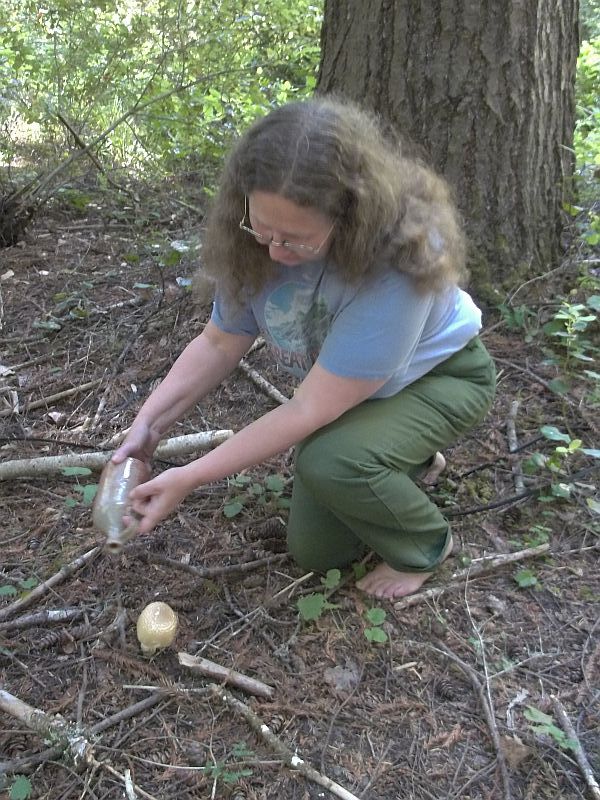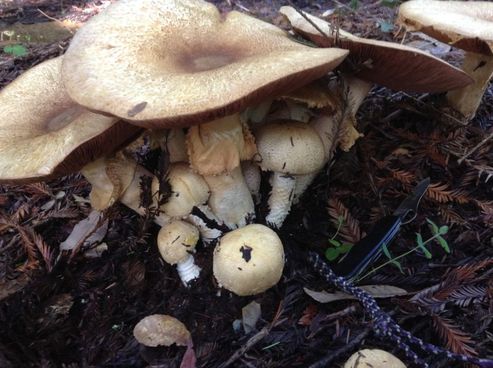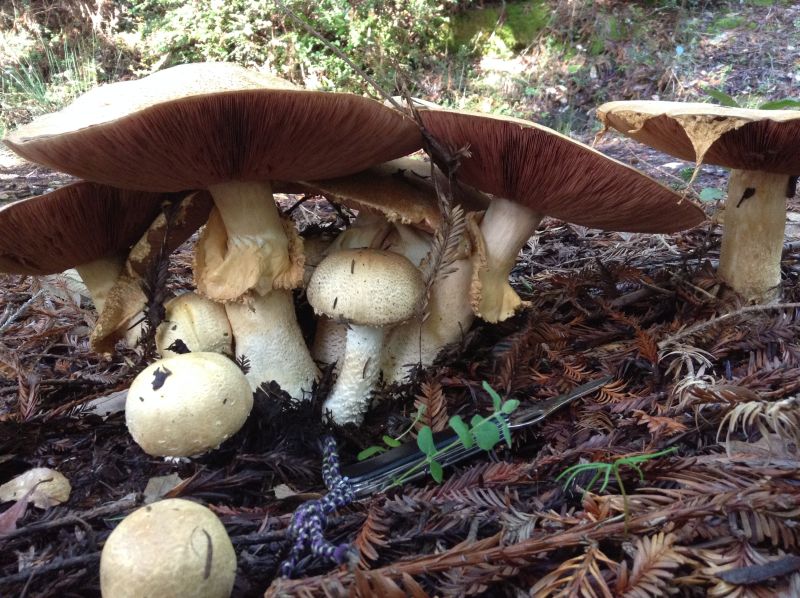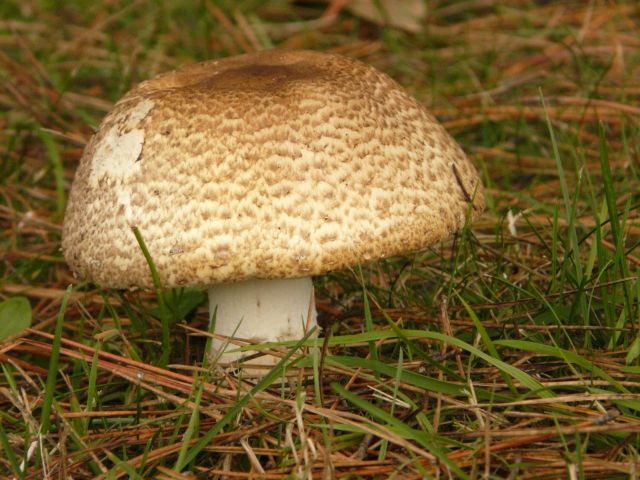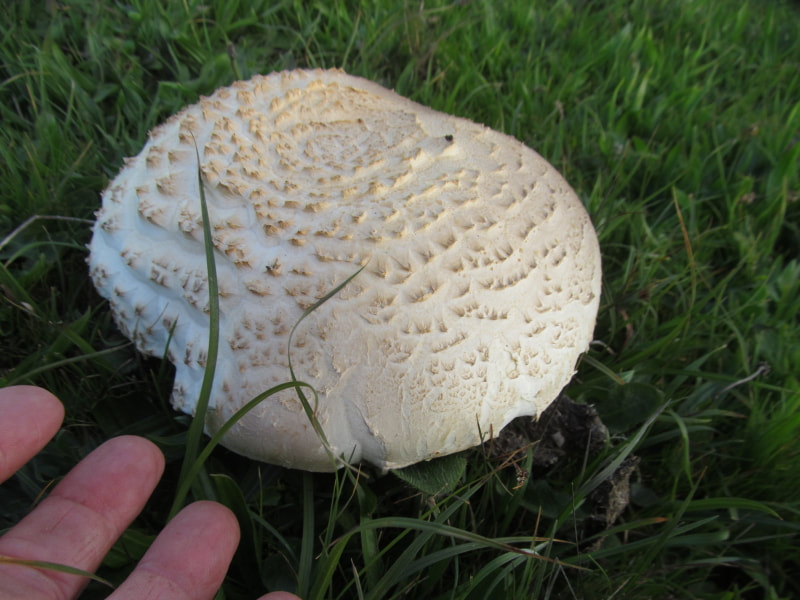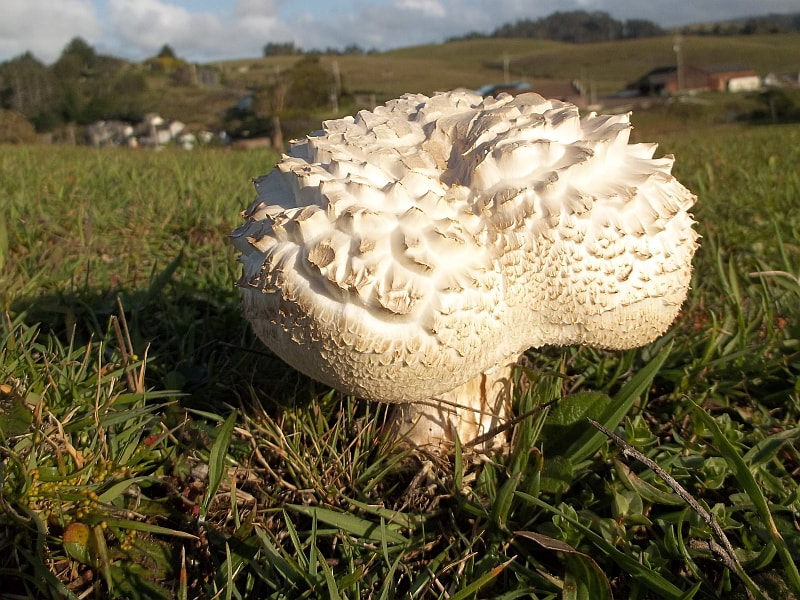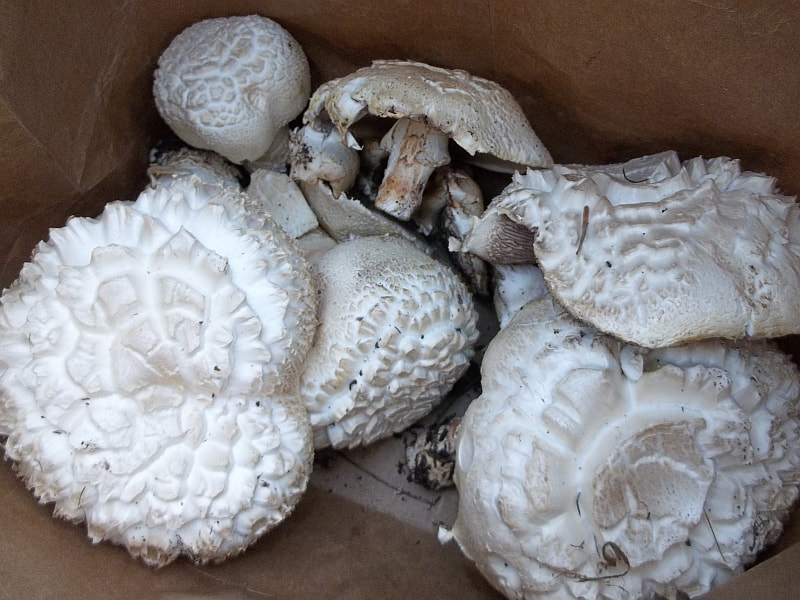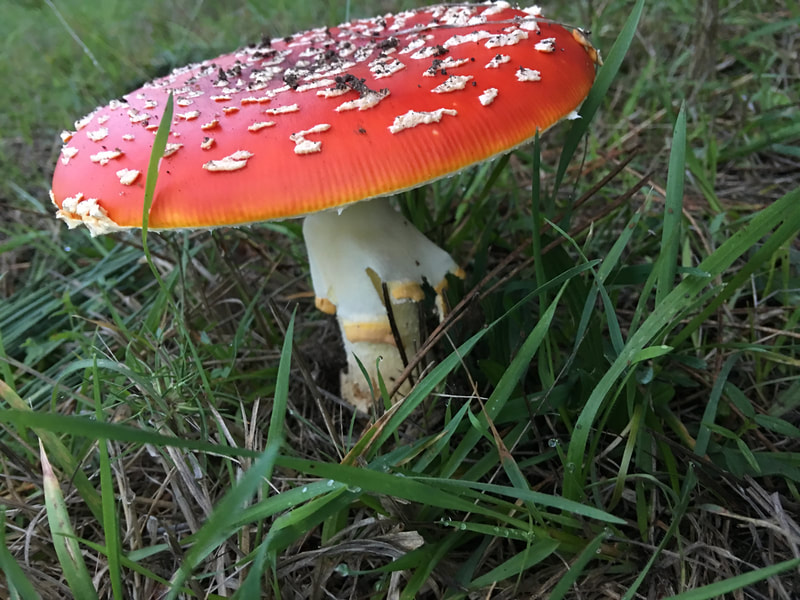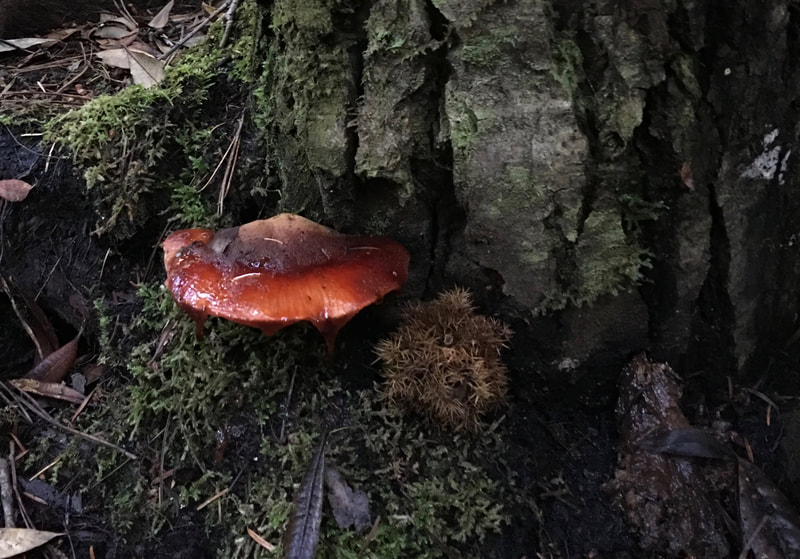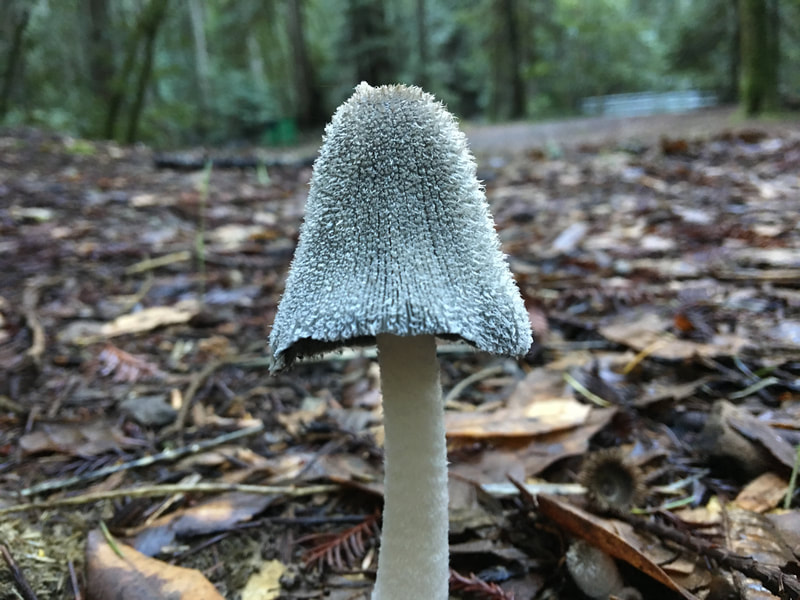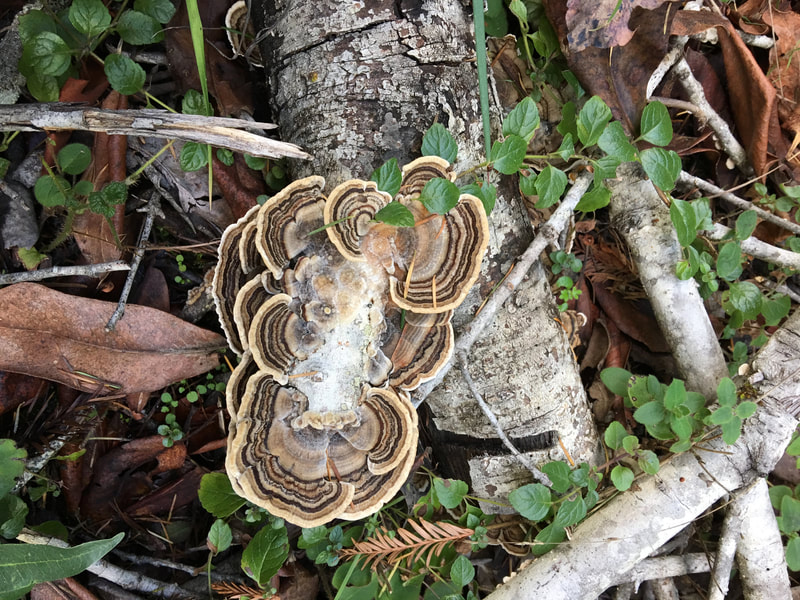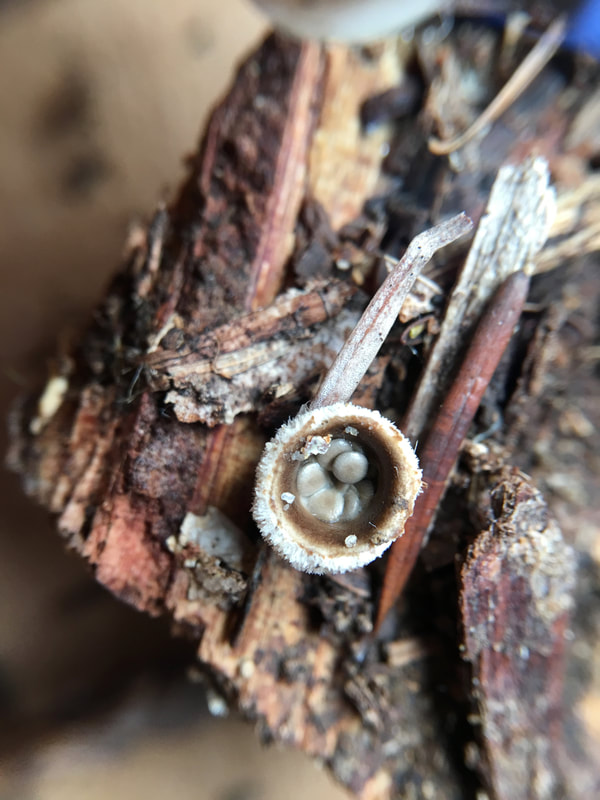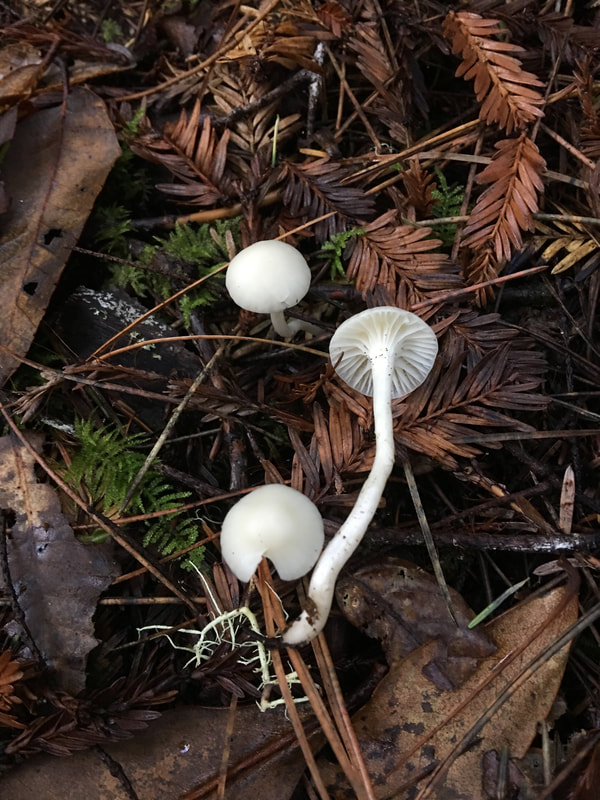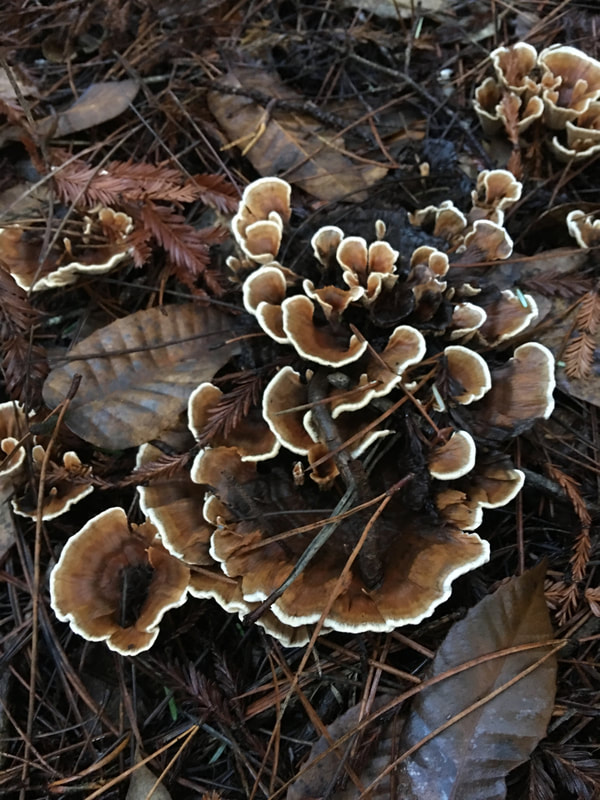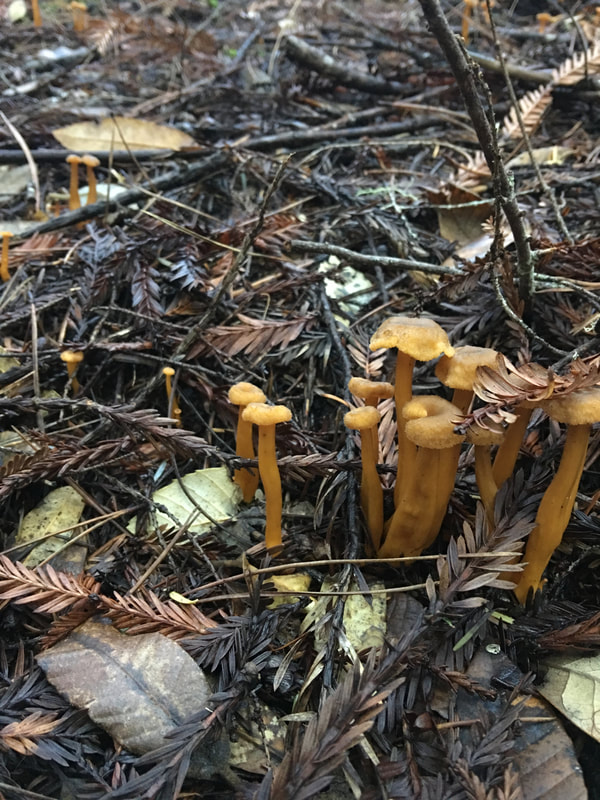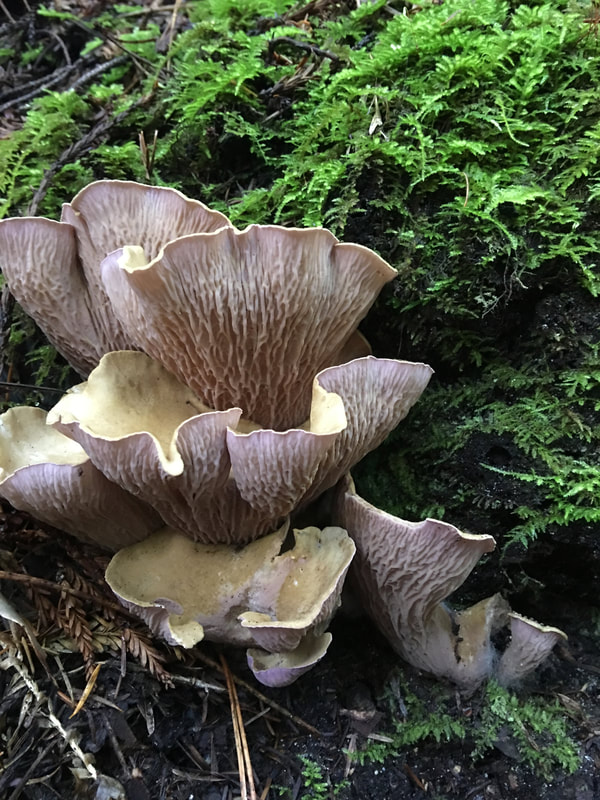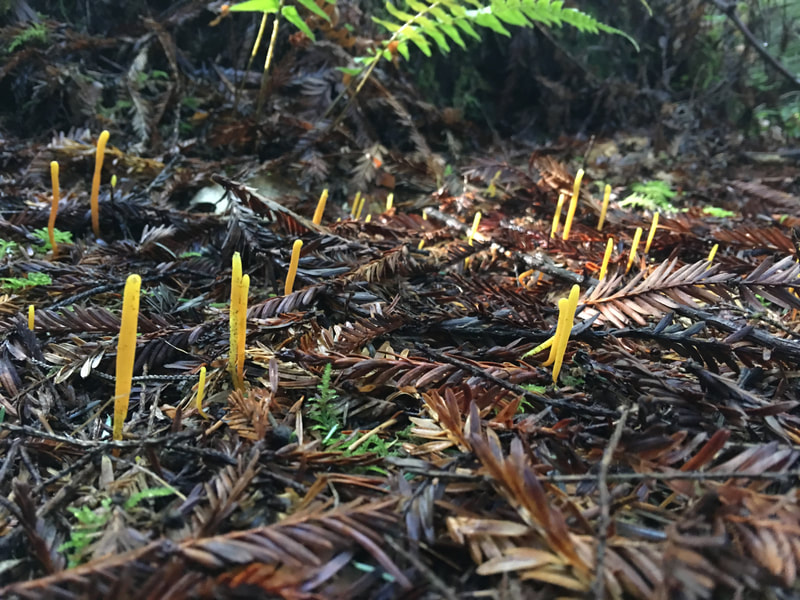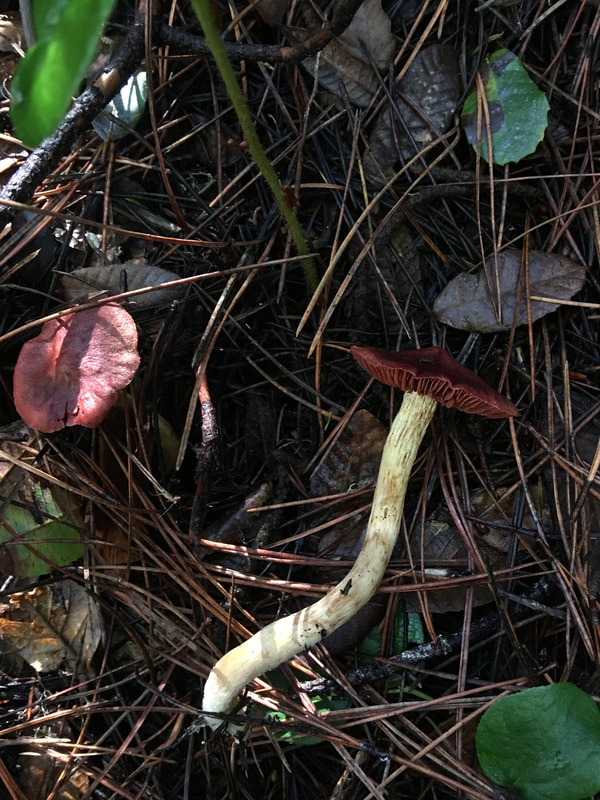Mushrooms of the Mendocino Coast
Golden Chanterelle, Cantharellus formosus
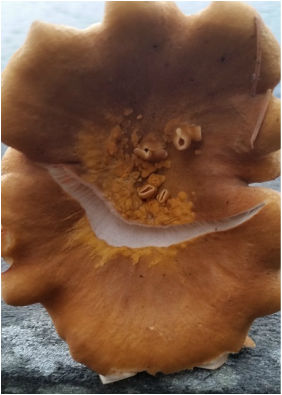
Chanterelles have a lot of character! They have a long season; they often start coming up on north facing slopes in July or Aug., if we get a little drizzle or late summer rain. These early chanterelles are small and dry-fleshed, and will sometimes cause diarrhea if eaten in abundance, as they are so concentrated. The mushroom that would have been 2 inches in diameter early in the season is equivalent to the 6-inch chanterelle now that we have enough moisture for them to achieve full growth. The golden chanterelles generally continue until the cold weather sets in in Jan., and if we get a warm winter, they can continue even later.
Chanterelles, like many mushrooms, are a good source of minerals, including copper, iron, manganese, potassium, zinc and selenium. They also contain some B vitamins, vitamin D (which increases if the mushroom is in the sun, or put into the sun after cutting for a few hours) and small amounts of vit. C.
Medicinally, chanterelles are reputed to be anti-inflammatory, immune-enhancing, anti-cancer, antimicrobial, antifungal and antioxidant. A study done in Iran showed antioxidant activity: https://www.ncbi.nlm.nih.gov/pubmed/26349513.
Chanterelles should always be well-cooked, as they are difficult to digest.
Chanterelles, like many mushrooms, are a good source of minerals, including copper, iron, manganese, potassium, zinc and selenium. They also contain some B vitamins, vitamin D (which increases if the mushroom is in the sun, or put into the sun after cutting for a few hours) and small amounts of vit. C.
Medicinally, chanterelles are reputed to be anti-inflammatory, immune-enhancing, anti-cancer, antimicrobial, antifungal and antioxidant. A study done in Iran showed antioxidant activity: https://www.ncbi.nlm.nih.gov/pubmed/26349513.
Chanterelles should always be well-cooked, as they are difficult to digest.
Photo by Anna Moore
Photo by Craig Hathaway

